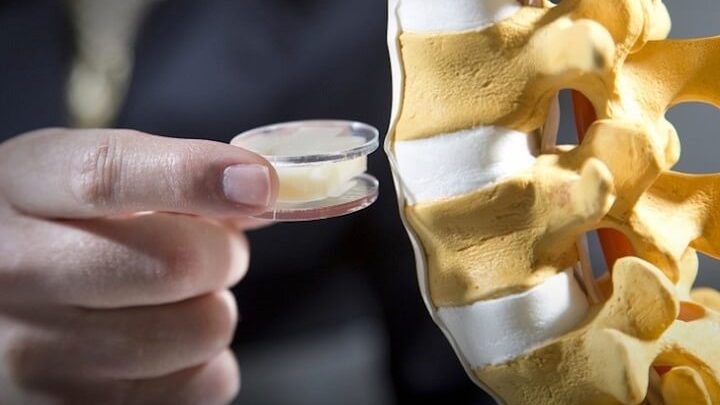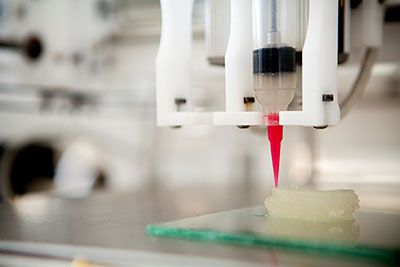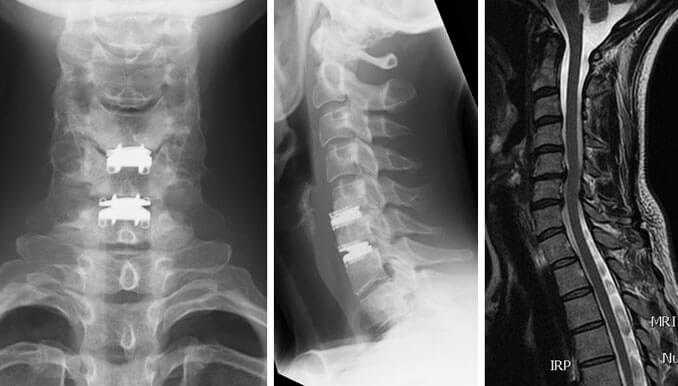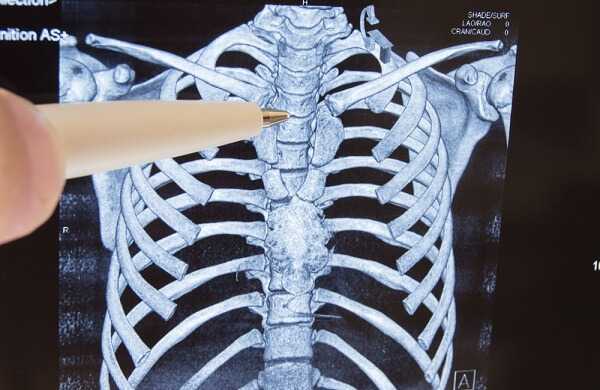Using 3D Printing for Herniated Disc Surgery – Not Just Science Fiction

Can you imagine someone simply “printing out” a new, healthy body part for you that could be used to replace a damaged body part? For example, what if a brand new intervertebral disc could be printed out for you, which your physician could implant into your spine during a routine herniated disc surgery?
The idea is not as farfetched as you might think. Researchers at Cornell University took bioprinting to a whole new level recently by using living cells and 3D printing technology to create a working ear. The creation looks and behaves like an actual ear, and it was produced using human genetic material and the same advanced 3D “printing technology” that has taken the techno-geek world by storm in recent years. While an artificially manufactured, anatomically correct ear might seem superfluous, think of how such a thing might help people born with ear deformities.

A 3-D printer in Weill Hall deposits cells encapsulated in a hydrogel that will develop into new ear tissue. The printer takes instructions from a file built from 3-D photographs of human ears taken with a scanner in Rhodes Hall.
Now, take that same delightful thought and apply it to people who suffer from the pain and other symptoms associated with degenerative spine conditions in the lumbar (lower back) region. The group of Cornell researchers who made that ear are testing 3D printing of intervertebral discs. They have used these 3D discs on rats more than 100 times, with great success.
The way it works is, a 3D printer “prints” strings of stem cells onto very specific portions of a deteriorating disc. After the procedure, the stem cells enact their pre-designated biological programming – in essence, replicating new disc tissue. In addition, the Cornell group is developing a method to “print” entirely new intervertebral discs for patients whose original discs became damaged either due to age or injury. The new disc is “tissue-engineered” from the disc it is meant to replace. In other words, it’s a disc “clone.”
Sound like the stuff of science fiction? It isn’t. Some companies are working on 3D bioprinting that could provide whole internal organs, including kidneys, hearts, and livers. There are some estimates that the 4,000 or so patients who die each year while awaiting a kidney transplant might have a lifeline in the form of 3D printing technology.
One caveat: All of this is still very new. People might currently be able to print actual, working models of firearms and other plastic items, but the FDA moves deliberately. That said, just last month, an infant whose trachea had not developed properly received a surgically implanted, plastic, 3D printed windpipe to help hold the baby’s air passages open. The artificial trachea will dissolve over a few years, after giving the child’s own windpipe time to develop.
So, this is happening now. The use of 3D bioprinting could change the nature of surgery – including back surgery – in a matter of a few years, rather than a few generations.




